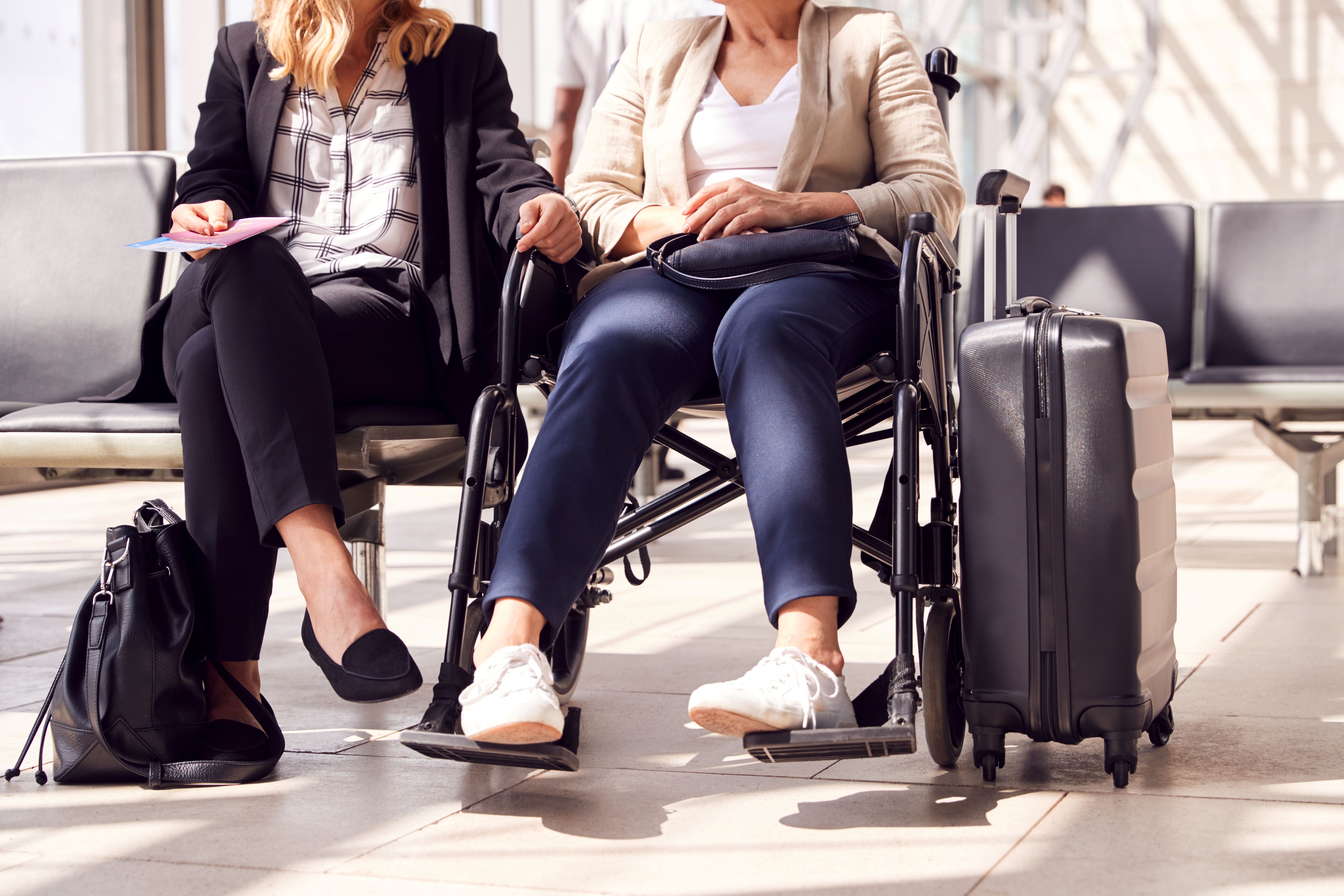
4 Tips to Make Traveling By Plane With a Wheelchair Easier
Traveling by plane as a wheelchair user can be tricky when navigating security, boarding your flight, layovers, and everything else that comes with getting on an airplane. And, not many resources exist to guide wheelchair users on ways to plan for the experience and avoid any challenges. Here are four tips to make traveling by plane with a wheelchair easier!
1. Give Yourself Time
Before heading off on vacation, the first step is planning your travel arrangements. If you need to take a connecting flight, keep in mind the time you will need to get off the plane with your wheelchair as you book your flight. Staff at the airport you are flying into could take 25 minutes to over an hour to get your wheelchair back to you after the plane lands.
Avoiding flights with layovers is one way to steer clear of unnecessary stress in the airport and missing a connecting flight. Sometimes booking a flight with a layover is inevitable, so plan for any delays. You must plan for delays if you book a flight with a layover. For example, book your travel with refundable or flexible hotels, so you have one less thing to worry about if you missed your connecting flight.
2. Call TSA Cares Passenger Support and Your Airline
After thoroughly planning your trip and booking your flight, contact TSA Cares, the Transportation Security Administration's passenger support program. This program assists disabled travelers with a wheelchair or medical supplies and can answer any questions you might have about maneuvering through security lines.
Your airline’s disability service can also put in their system that you or your loved one needs assistance during the flight. Typically, airlines reserve more spacious bulkhead seats at the front of the plane for disabled passengers. Calling the airline's disability services and asking about your preferred seat selection can get you the most accessible space on the plane ahead of time. Typically representatives will ask you questions about your chair, including its size and weight, so they know how to best stow it during your flight.
Need help finding the phone number of your airline's disability services? Call the airline customer service line, and they will be able to help redirect you!
3. Prepare Your Wheelchair
A manual wheelchair is pretty simple to store on an airplane, but a power wheelchair can be a little more complicated because of its weight and many parts.
A wheelchair is a necessity of life, and replacing any parts due to damage can mean paying a costly sum. Before boarding, remove anything you can on your wheelchair, including the headrest and joystick, and secure any movable parts like wires and footrests. You could even tape signs on the wheelchair with instructions and your phone number or attach the manual to help direct the airline when stowing your wheelchair.
And, if you need any repairs for your wheelchair during your travels, it’s a good idea to make a small kit. Your kit can include the following:
- Duct tape
- Allen wrenches to fit the screws on your wheelchair
- Replacement screws
- The user’s manual for your wheelchair
4. Know Your Rights as a Disabled Traveler
As a passenger with disabilities traveling with a wheelchair, it’s important to go on an airplane knowing your rights. Check out the US Department of Transportation’s Aviation Consumer Protection for passengers traveling with a disability. This website will give you more insight into how the airline will work with you and touches on The Air Carrier Act (ACAA), which protects disabled passengers traveling with adaptive equipment.
At StrongGo, we believe in creating an accessible world for the disabled community, and we do this by engineering and designing detectable warning dome tiles. Contact us today by emailing csd@stronggo.com to learn more about our devices.


